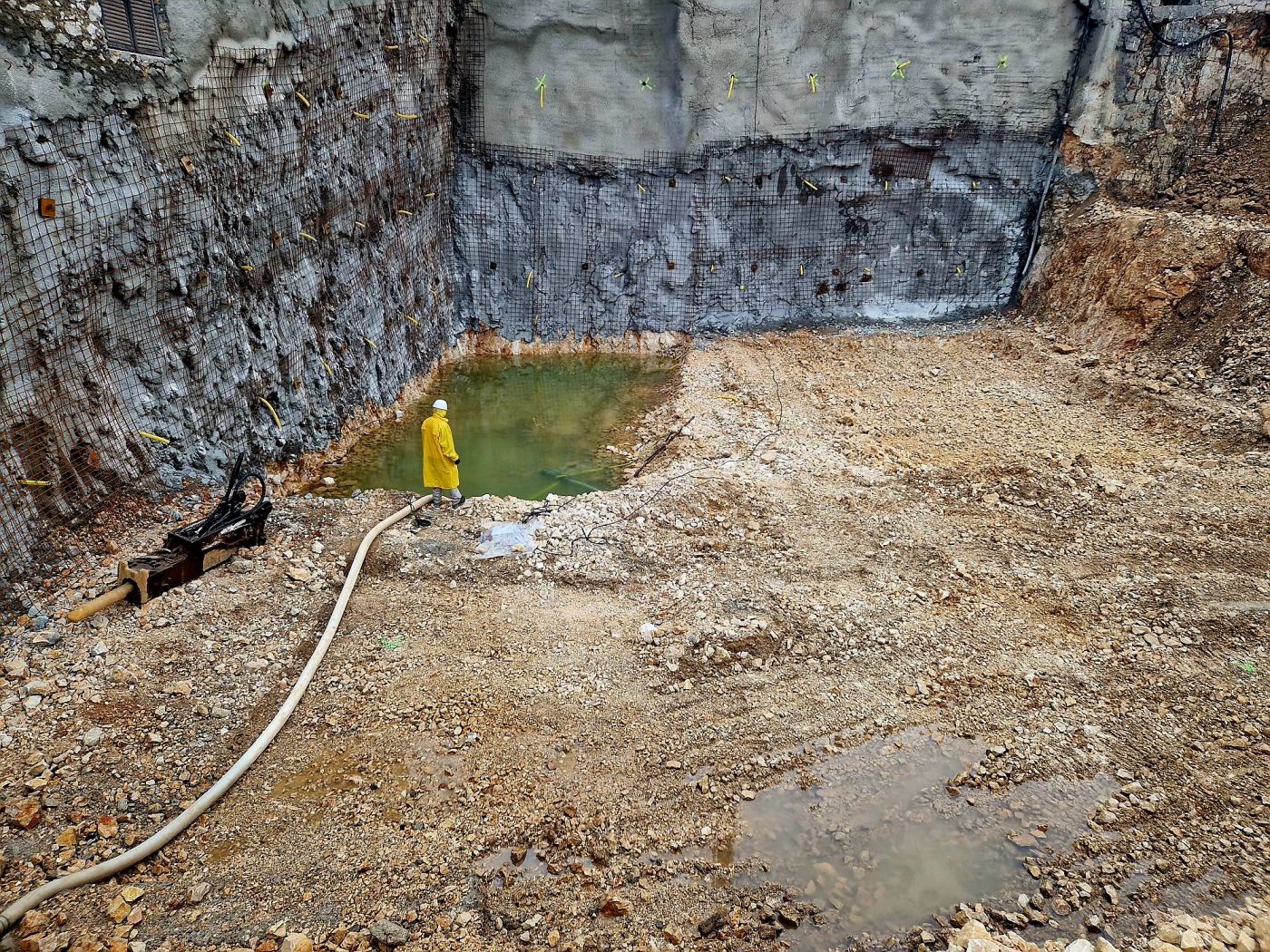The influence of groundwater on the stability of soil and underground parts of structures
If structures are constructed in areas with a high level of groundwater, it can have a significant impact on the stability of soil and underground parts of the structures. A high level of groundwater at the location can cause a decrease in the shear strength of the foundation soil under the structures, an increase in soil pressure on the walls of the underground parts of the structures (walls of open pits and basement walls) as well as the uplift of lighter structures due to buoyancy.
For the above reasons, in areas with a high level of groundwater, it is necessary to take appropriate technical measures during design and construction in order to manage its harmful influence.
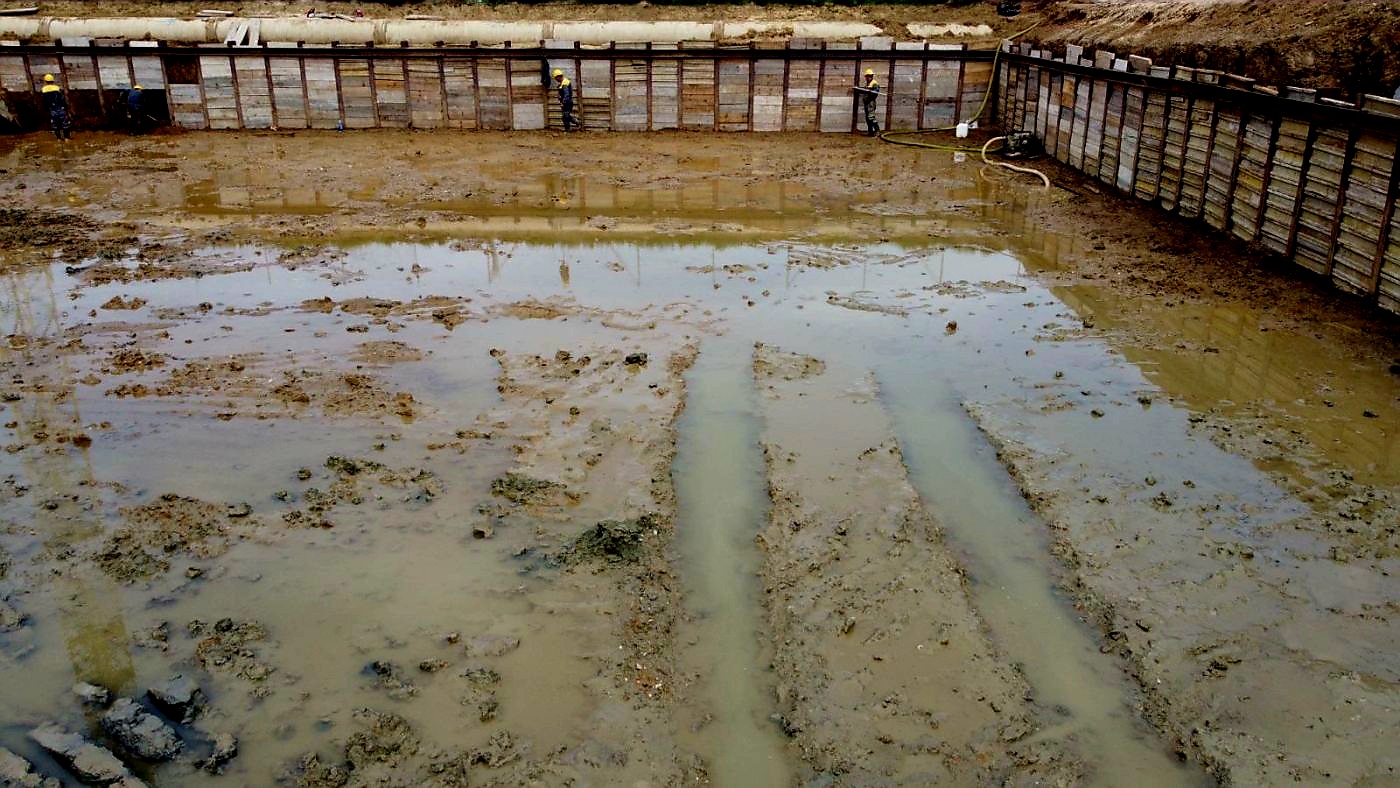
Designing of soil excavation in zones with a high level of groundwater
Firstly, prior to the design and implementation of soil interventions, it is necessary to carry out high-quality geotechnical investigation and testing that can determine the level of groundwater at a specific location (measuring the groundwater level in boreholes and using piezometers).
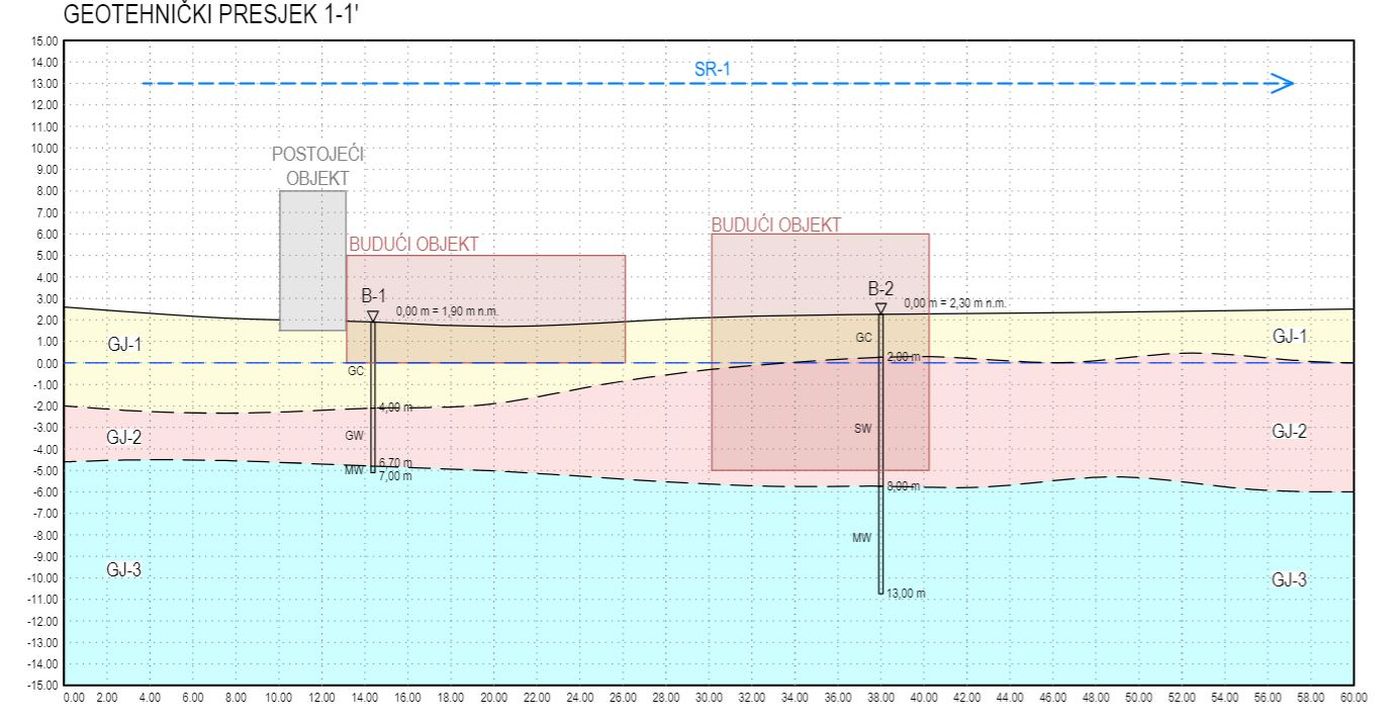
After determining the above, it is necessary to define the framework of the excavation in the soil, i.e., whether it is a temporary or permanent excavation for the construction of a structure / a permanent structure, what the depth of the excavation is and what the spatial limitations on the surface are, which informs the excavation protection (open pit).
The common types of soil or structure stability loss due to the effect of groundwater that are checked during design are the following:
- walls failure on the retaining structure for open pit protection – a possibility of occurrence if the hydrostatic pressure of the groundwater acts on an inadequately dimensioned impermeable retaining structure above the level of the bottom of the open pit excavation;
- soil or structure failure caused by buoyancy – a possibility of occurrence if the hydrostatic pressure of groundwater acts on a poorly permeable layer of soil with a smaller thickness or a light structure of the underground parts of the structures; and
- hydraulic soil failure – a possibility of occurrence due to the upward flow of water (most often around the bottom of an impermeable retaining structure) in materials of higher permeability during the open pit excavation.
Below is a detailed description of the listed types of failures and of the technical methods used to reduce the risks of their occurrence.
Walls failure on the retaining structures due to groundwater pressure
During the implementation of temporary or permanent open pit protection in the form of impermeable retaining structures, it is necessary to take into account the groundwater hydrostatic pressure load on their walls. The retaining structure, which bears the added hydrostatic pressure load, needs to be strengthened by elements such as geotechnical anchors or steel bracing structures as well as adequately reinforced and constructed within the foundation soil in order to prevent the collapse of the retaining structure or the global failure of the soil behind it.
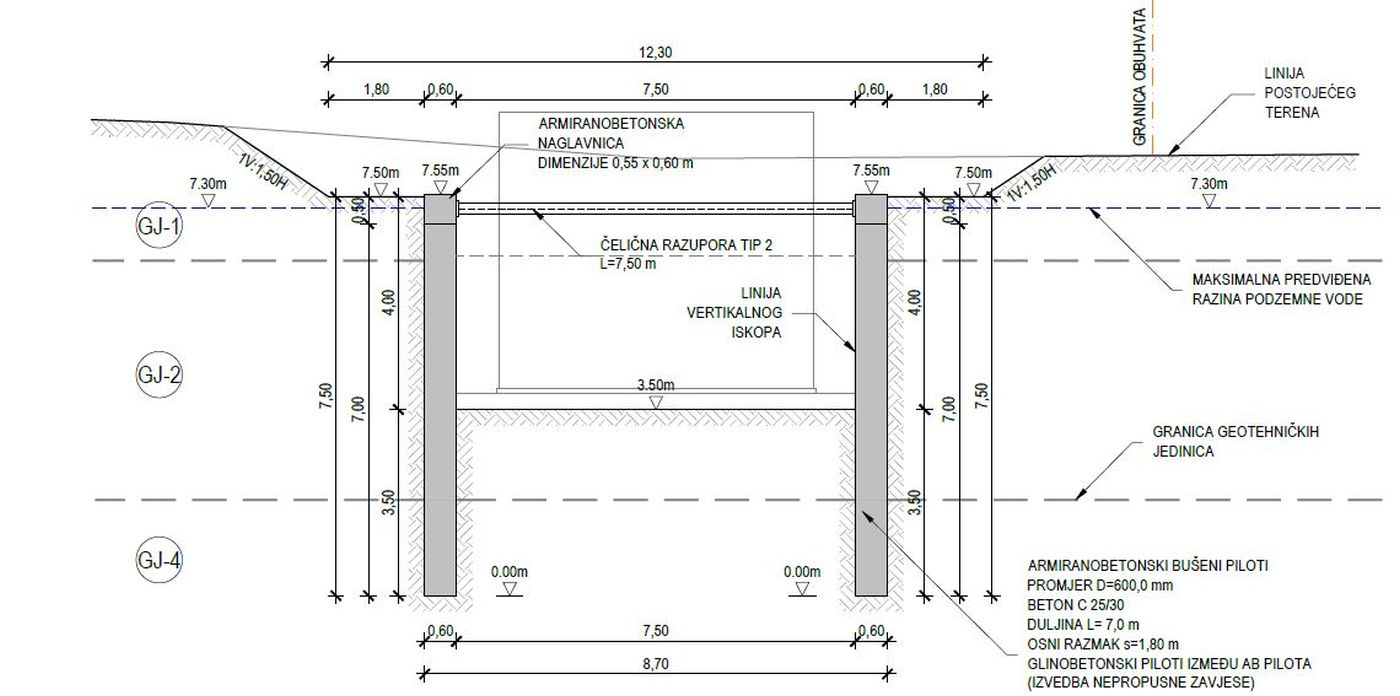
Soil or structure failure due to the effect of groundwater buoyancy
The stability of a structure or a layer of foundation soil with a low permeability with regard to uplift due to the effect of buoyancy must be checked by comparing the constant stabilizing effects (for example, weight and lateral friction) with the constant and variable destabilizing effects of water. If the destabilizing effect of water is greater than the stabilizing effect of weight etc., then several solutions are applied depending on the durability of the underground parts of the structure.
If the issue of buoyancy occurs in a temporary intervention in the soil (temporary excavation or a temporary structure for open pit protection), it is suggested to lower the groundwater level on the site during construction using drainage systems (drainage trenches) and pumping systems (wells etc.).
If the issue of buoyancy occurs on permanently underground parts of the structure, it is necessary to increase the total weight of the underground parts of the structure or to install tension piles through its foundation structure, which prevent it from rising due to their tensile load capacity.
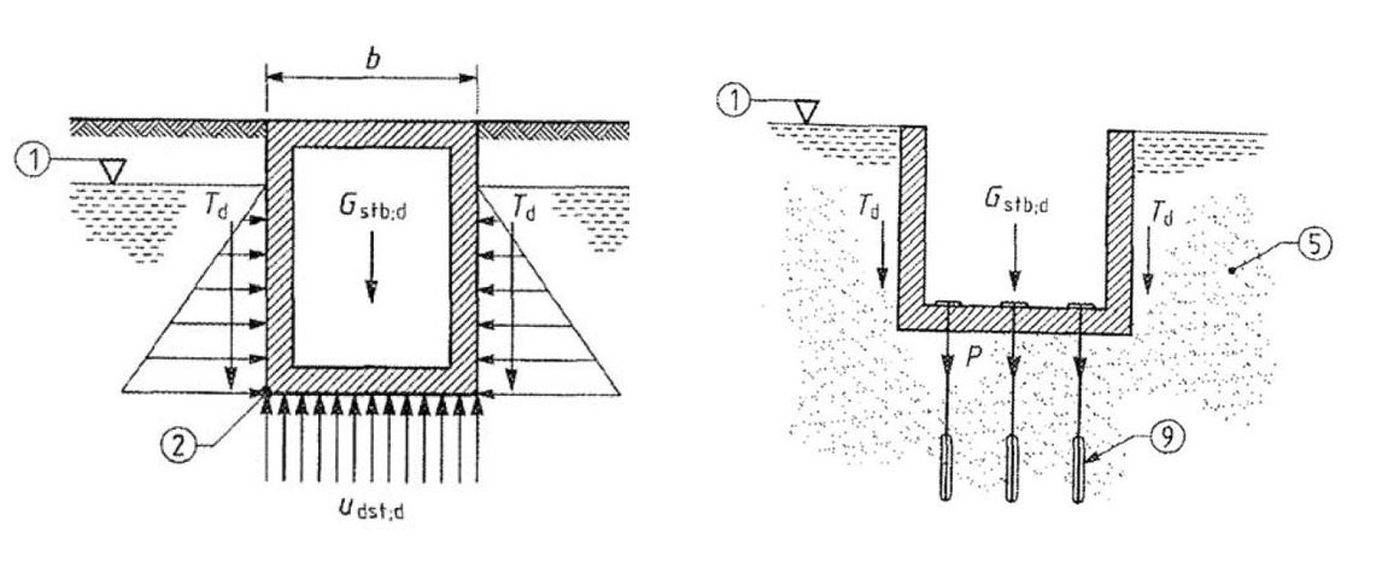
Hydraulic soil failure due to groundwater flow
The soil stability with regard to hydraulic uplift (hydraulic soil failure) must be checked by comparing the pore pressures and the stress that occur in the permeable materials at the bottom of the excavation (gravel or sand) because of the adverse upward flow of water that reduces the effective strength of the soil. The most commonly adopted measures to reduce the risk of hydraulic soil failure are the reduction/elimination of pore water pressures (draining or sealing the bottom of the open pit) or increasing the soil weight at the bottom of the open pit by further burying the bottom of the impermeable retaining structure (increasing the water flow path).
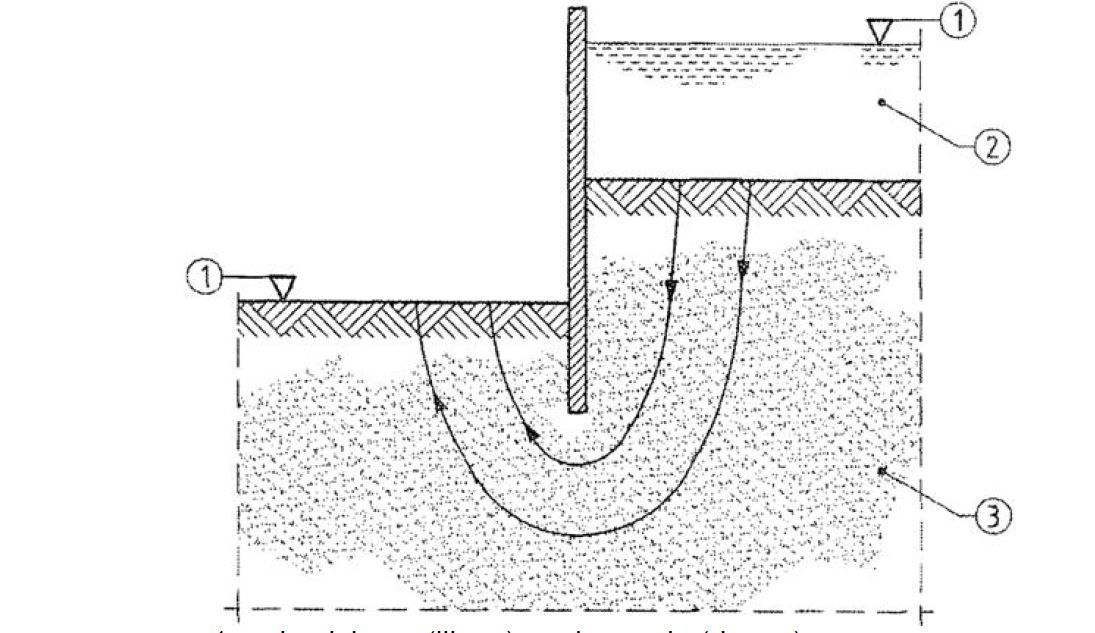
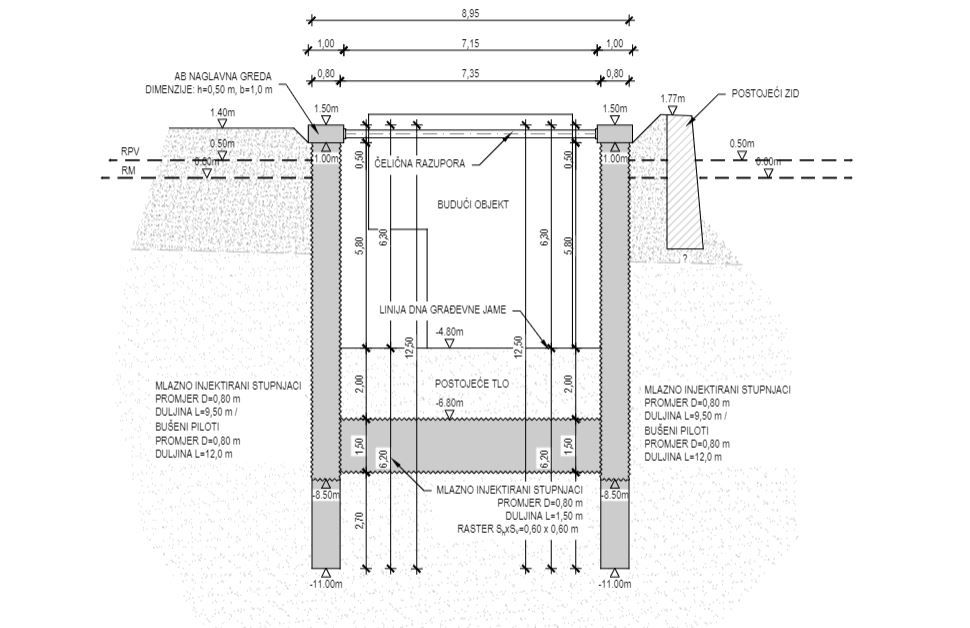
Conclusion
Groundwater management in the vicinity of temporary or permanent underground parts of structures is one of the constant challenges in the construction industry. Inadequate resolution of this issue can lead to structural damage that can endanger people in the structure itself and in the area around the structure. The initial performance of high-quality geotechnical investigation and testing for determining the groundwater level and its potential variation at a site as accurately as possible is of exceptional importance. After that, during the design and implementation phase, it is necessary to carefully analyze and eliminate the potential adverse effects of groundwater on the stability of the soil/excavations during construction and of the underground parts of the structure during exploitation.
Read more: Open pit protection designs
